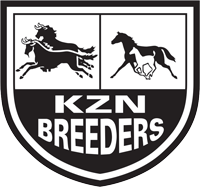How I Think About Bits And Bitting
| How I Think About Bits And Bitting 04 February, 2015 – Walter Pike |

I’m giving a series of talks on bits and bitting around the country in the next couple of weeks, so the topic of bits and bitting is on my mind.
Think of the bit as a cell phone
I guess the first thing that we need talk about, is really what a bit actually is. To start off with its not a device to inflict pain, its a tool to communicate with your horse. Yes, it can be painful but that’s not its purpose. In fact any pain it causes is a distraction to the horse and stops it communicating properly.
As an analogy, lets think about a device we are all very familiar with – the cell phone. It works best when the signal is strong, no dropped calls. We don’t want to get the situation where the signal keeps on breaking so that we get a constant ‘can you hear me, can you hear me now, stand still, keep your head like that,’ scenario.
The trouble with our ‘cell phone’ is that its really not as simple as a cell phone, that really just delivers the person we are talking to from where they are, to where we are. They still speak English and we understand English. When we are talking to the horse through the reins we are talking in a language which the horse has to first understand before it gets good at it. Think of youself on a call to Beijing.
To continue the analogy, we need only think of two things when using and choosing what bit to use with our horse and those are:
o How to make the signal as clear as possible
o Make the language we use as clear as possible
The communication system
To understand and to solve a problem with bitting or to understand what bit to use, we have to understand the communications system.
1. The receiver
What’s happening where the bit is. The horse’s mouth.
2. How to keep the channel clean
What we need to do to make sure that the signal is clear. No static.
3. How to adjust the transmitter so that we give the right signal
What we can do with the communication device to change the way we give the signal to the horse and how to teach the horse.
How a horse learns the language
We start by understanding how horses learn:
o Horses are a flight animal. They are hard wired to run at pressure, anything that scares them will cause them to run, if they can’t run they will resist or fight.
o Horses cant reason. They solve problems through rapid iteration of solutions, trying one thing after the other until they find the answer.
o Horses learn best from the release of pressure. You set the horse a problem he knows that he has found the answer when the problem goes away.
o Horses learn step by step. Once he understands the solution, you make the problem a little more difficult – he solves it and so he builds his learning, one building block at a time.
The Horses mouth is the receiver
The horse’s mouth, like ours has got three main parts to it. The tongue, lips and gums. The tongue is the most sensitive, the lips next and the gum the least. that’s actually why horses lift their tongue of the bit and take the pressure on the bars instead. The tongue is the most important part of the horses mouth.
The horses head and our bridle also extends the “mouth” and provides access to other pressure points; the top of the head, the nose and the chin groove for example.
Adjusting the device to provide a clear signal
Simplistically speaking a bit has two components – the mouth piece which we need to adjust to make sure that the signal is as clear as possible, and the cheeks piece which changes the distribution of pressure.
The action of the mouth piece
The design of the mouth piece will determine how the pressure is distributed to the components of the mouth. The pressure form a force on the reins of 1kg will be distributed around the mouth in a manner determined by the design of the mouthpiece – moving it around from the tongue, to the lips or the bars etc.
The designer can vary the:
o Thickness of the mouth piece
o The shape and texture of the mouth piece
o The number and type of hinges in the mouth piece
o The length and shape of the connector in the mouth piece
The action of the cheek pieces
The cheek pieces can be designed to change:
o Where how the pressure is distributed
o Introduce new pressure points
o Introduce leverage
Keep the signal clear
This is the key to proper communication. You need to find a mouthpiece that the horse accepts and is comfortable with, so that the connection is not filled with pain and discomfort.
Because of the sensitivity of the tongue, the most common problem we have is the horse objecting to pressure on the tongue. We can adjust the way the bit distributes pressure on the various parts of the mouth by adjusting the design of the mouthpiece relieving the pressure on the tongue and transferring it to somewhere else in the mouth.
Change the signal to better explain
We can change the direction and distribution of the pressure around the horses head. We can introduce poll pressure, introduce pressure on the nose, set up rotation with using a curb – suggesting that the horse change where he carries his head.
I think of these as clarifying the explanation, a teaching aid – teaching him to understand the new language.
You may also want to increase the volume of the signal, by increasing leverage.
Great hands
We then need to use our hands which we can think of as the transmitter. A bit can’t do its job unless the person with the reins in his or hands has the skill and the sensitivity and the knowledge to teach the horse what he want him to do. No matter how sensitive the horse is, if he learned to speak Chinese and you are speaking Portuguese he won’t understand you.
A horse is not a motor car
No horse has a hard mouth. It’s not hard to understand whom you see horses sorting through their food, or even picking oats that may have spilled from their food bin and fallen into the bedding.
Bits are also not on a continuum from mild to severe, and its more often than not that the solution to communicating with a horse that is too strong is to go DIFFERENT not more severe. Its not like a car that you have to put more pressure on the brakes if you want to stop more quickly.
You just have to make the signal more clear, more understandable.
In a nutshell:
Think of the horses mouth, you and the bit as a communications system not as a device to inflict pain.
Understand how to make sure that the communication is not interfered with by pain or confusing signals, caused by mouth conformation, and adjust the way you communicate the pressure you exert with your hands in order to teach the horse what you want him/her to do.
In later articles I will talk about how different types of bits work.
 Walter Pike started riding as an infant sitting on the front of his father as he rode his polo ponies. He graduated to riding polo ponies bareback until his father said his seat was good enough to use a saddle. He played Polo at Addo and while at university in Pietermaritzburg at Lions River Polo Club. Walter Pike started riding as an infant sitting on the front of his father as he rode his polo ponies. He graduated to riding polo ponies bareback until his father said his seat was good enough to use a saddle. He played Polo at Addo and while at university in Pietermaritzburg at Lions River Polo Club.He played Polocrosse at provincial level before giving up riding for decades. He now is back playing polo at Crocodile Creek, making polo ponies, has got his racing colours back and is working with difficult horses at the racetrack and other places. He is the admin of Facebook groups “The Well Horse” and “A Thoroughbred Second Life”. When solving problems with difficult horses he supplies Bombers Bits. |



